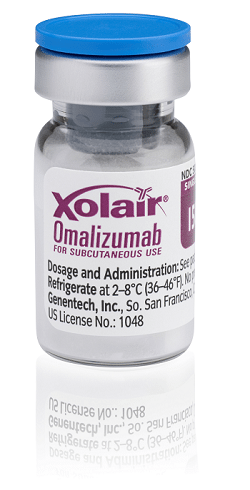
The FDA has issued new advice to food manufacturers on cross-contact and accurate labeling for top food allergens. This draft guidance outlines ways food makers can comply with requirements to ensure packaged food is safe for people with food allergies.
So what is the new guidance and what will it mean for food allergy consumers once in effect?
Chapter 11 of the draft guidance explains how manufacturers implement a food allergen program. It provides several examples that address preventive measures, supply chain controls, cleaning procedures, cross-contact, and product labels.
The examples – one for ice cream and frozen desserts and the other for cookies – detail each step to take to ensure manufacturers are preventing cross-contact and providing proper label information.
“Presenting several scenarios is a great way to show people what the general statements mean when put into practice,” says food safety consultant Dr. Steven Gendel.
However, food allergy consumers shouldn’t expect to see a difference on products in the short term, Gendel says.
The principles of allergen control at the core of the guidance are not new. But the updated document gives the food industry additional and specific direction on how to follow the guidelines, he says.
“What this draft does provide is help on how to use those principles” in controlling allergen exposures, Gendel explains. “Hopefully, this guidance will have a positive impact by getting companies to take a fresh look at their allergen control programs soon.”
FDA Advice: The Sesame Issue
The additional advice will help “companies who are trying to do the right thing and meet their legal obligation to control allergen cross-contact risks,” says Sarah Sorscher of the Center for Science in the Public Interest’s (CSPI).
However Sorscher, CSPI’s director of regulatory affairs, is not convinced the new allergy chapter will impact the practice of top allergens like sesame being intentionally added to products.
“The guidance does nothing to deter companies who are currently taking the wrong approach, adding allergens as a quick and dirty solution to avoid processing sesame on separate equipment,” she says.
By the end of 2022, commercial bakeries in the United States were adding sesame to baked goods just as the FASTER Act was to go into effect. Under FASTER, sesame became the ninth top allergen in the United States as of January 2023.
“Unfortunately, FDA has failed to close this dangerous loophole in its rules, which limits food access and puts consumers at risk,” Sorscher says.
The FDA has previously told food makers that it does not support the practice of intentionally adding sesame to products. It again mentioned the sesame situation in a September 2023 statement about the draft guidance.
“The FDA is encouraging industry to follow the draft guidance … rather than intentionally adding sesame to their products to comply with the law,” it reads.
But the updated draft guidance was not spurred or shaped by the sesame allergen situation, an FDA spokesperson tells Allergic Living.
The new food allergen chapter is part of the draft guidance Hazard Analysis and Risk-Based Preventive Controls for Human Food. It was created to help facilities comply with the requirements for Current Good Manufacturing Practice (CGMP) and Preventive Controls for Human Food.
“Chapter 11 provides recommendations on how food facilities can employ CGMPs and preventive controls to address allergen cross-contact and ensure that the major food allergen ingredients are declared appropriately on the finished food label,” an FDA spokesperson says.
FDA and Allergen Label Errors
The draft guidance addresses inaccurate food labels, which have been an ongoing issue for food allergy consumers.
More than 70 percent of major food allergen recalls with known causes were due to errors associated with labeling, according to an April 2023 FDA research paper. The study analyzed 1,471 FDA recalls from October 2012 to September 2019.
The new allergen chapter outlines procedures manufacturers can employ to ensure labels have accurate allergen information, the correct label is used on the product, and how to monitor that the label controls are successful.
“I hope that the sections on label controls help to reduce the number of recalls from mispacked products,” Gendel says.
Chapter 11 also addresses voluntary allergen advisory statements, which would tell consumers when allergens are present due to cross-contact.
The agency continues to advise that “may contain” labels on packaged foods are not to be used in place of good manufacturing practices to avoid cross-contact. But it notes that if cross-contact is unavoidable, companies should include written justification in its food safety plan about why there is cross-contact and consider using an advisory statement.
Allergen Threshold Levels
The new FDA document also touches on threshold levels, the amount of allergenic protein someone can consume before reacting. The agency has not established threshold levels. But the FDA notes that scientific data on thresholds could be useful to companies establishing food allergen controls.
Gendel says the agency appears to be indicating support for the international expert thresholds that a committee of global experts is weighing. “There is little doubt that companies that do use those threshold values will not be second-guessed for doing so,” he says.
CSPI’s Sorscher thinks the language on thresholds “seems to be sending a signal to companies that low levels of undeclared allergens may be allowed.”
“But we haven’t seen any evidence that allowing companies to turn a blind eye to low levels of allergen contamination in products will be safe for consumers,” she says.
The FDA hopes that companies will use the new allergy chapter as a guide on how to properly ensure packaged foods free from cross-contact and properly labeled.
“The agency is interested in finding solutions, within our authorities, that meet the needs of consumers with food allergies,” FDA Commissioner Dr. Robert Califf said in a statement. “Updating this draft guidance with the new allergen chapter provides one tool to help manufacturers meet this goal.”
Consumers can let the FDA know their thoughts on the draft guidance by submitting electronic or written comments by March 25, 2024. Past that date, work begins on the final version of the guidance. The agency provides information on how to comment on the Federal Register website.
Related Reading:
Bread Suppliers ‘Adding Sesame’ as Seed Becomes Top Allergen
FDA Criticized for Response to Bakers Adding Sesame Allergen





